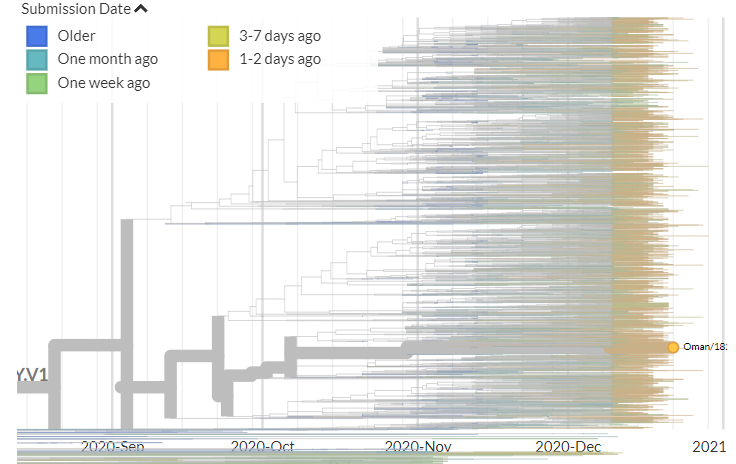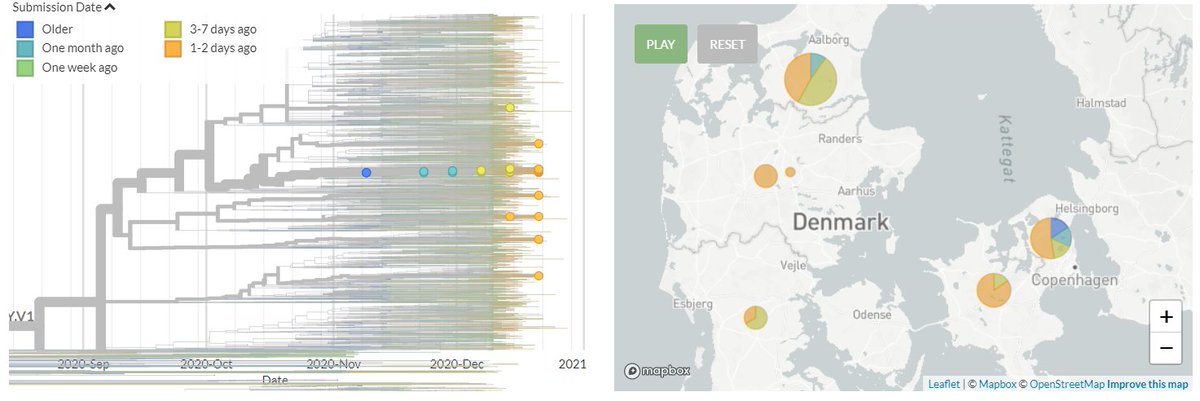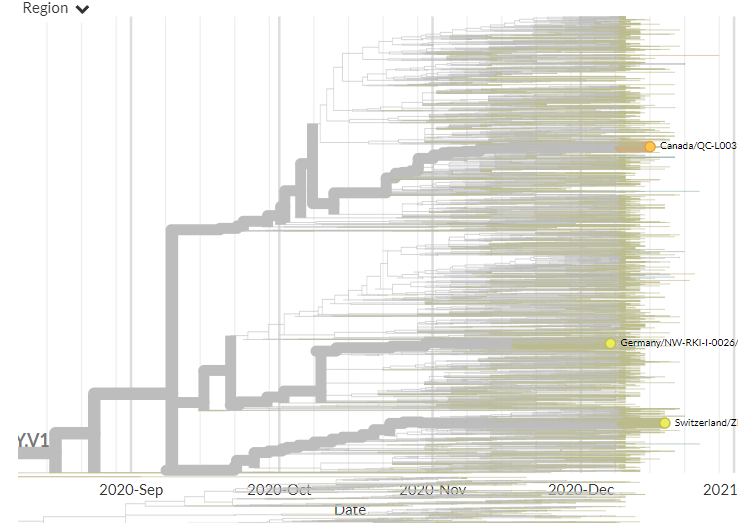
Each day brings new challenges, but here's an update to the dedicated S.N501 build, using data from 6 Jan 2021 to keep you going.
There are 42 new non-UK sequences in 501Y.V1 (B.1.1.7) & 7 new non-South-African sequences in 501Y.V2.
1/14
nextstrain.org/groups/neherla…
There are 42 new non-UK sequences in 501Y.V1 (B.1.1.7) & 7 new non-South-African sequences in 501Y.V2.
1/14
nextstrain.org/groups/neherla…
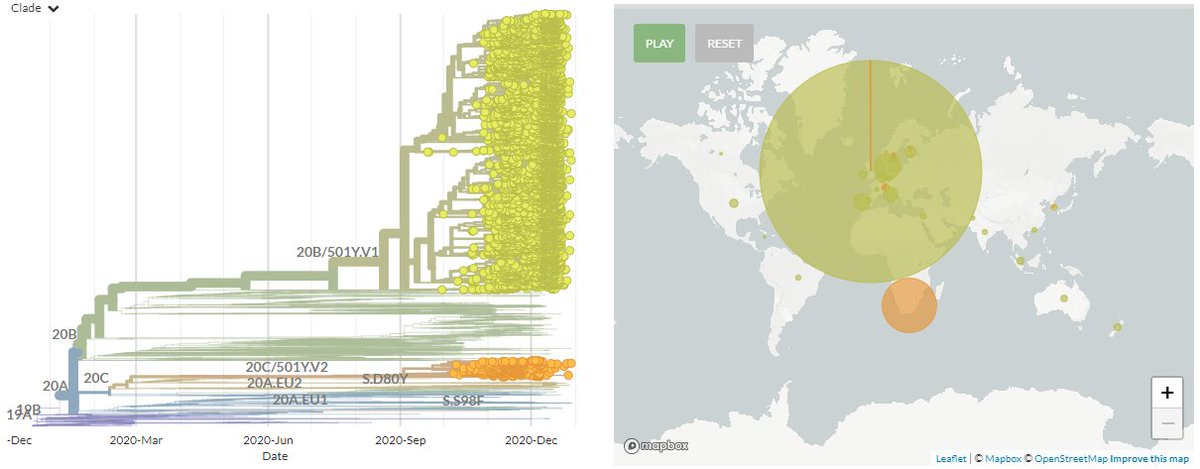
There are 42 new non-UK sequences in 501Y.V1 from the Netherlands, Italy, Hong Kong, Finland, Sweden, Germany, USA, Switzerland, Brazil, and the first sequence from 501Y.V1 in Oman.
nextstrain.org/groups/neherla…
2/14
nextstrain.org/groups/neherla…
2/14

Finland has 12 new sequences (orange), which mostly represent separate introductions. Zooming in (divergence view), we can see 3 of the new sequences are identical (red), which may indicate the cases are connected.
4/14

4/14
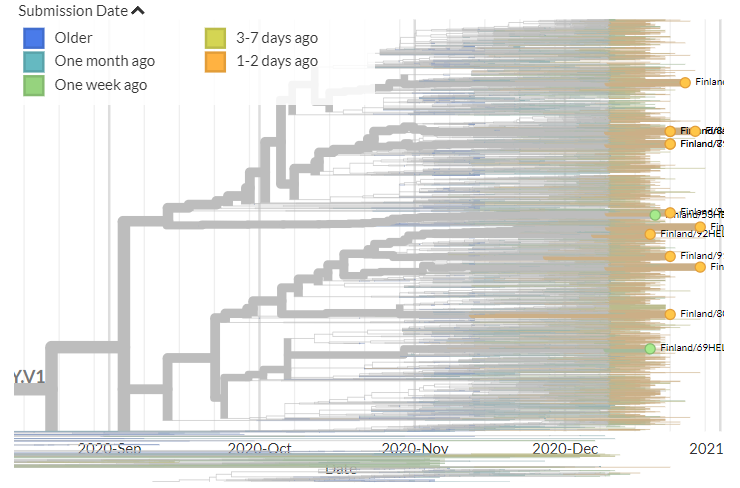

Netherlands has 4 new sequences (orange), indicating 1 clear additional introduction. The other new sequences cluster with older sequences, possibly indicating local transmission.
7/14

7/14


Switzerland has 3 new sequences (orange). 1 is clearly a separate introduction.
Zooming (divergence view), we can see 2 of the new sequences differ by 1 mutation, & connect to a UK sequence. More info would be needed to conclusively determine if this is local transmission.
8/14

Zooming (divergence view), we can see 2 of the new sequences differ by 1 mutation, & connect to a UK sequence. More info would be needed to conclusively determine if this is local transmission.
8/14


Brazil has 2 new sequences, 1 (marked) shows a new introduction. The other connects to a previous sequence. Zooming in (divergence view) we can see this more clearly - they are identical, and this may indicate local transmission.
9/14

9/14


Hong Kong, Germany and the USA (from New York), each have 1 new sequence (orange), indicating additional introductions.
10/14


10/14



Moving on to 501Y.V2, there are 7 new non-South-African sequences in 501Y.V2, from the United Kingdom (6) and Sweden (1).
11/14
nextstrain.org/groups/neherla…
11/14
nextstrain.org/groups/neherla…

UK has 6 new sequences in 501Y.V2 (orange), including 1 from Scotland. Most indicate separate introductions, but 1 new seq links to the older 1 (blue). Zooming (divergence view), they are separated by 1 mutation. This could indicate local transmission or the same exposure.
13/14

13/14


As always, the graph of variants per country is updated (remember: as people are preferentially sequencing S:N501 samples, the proportions shown are not accurate outside of UK & Denmark!)
Additionally, the 'reduced UK' S:N501 build is updated!
14/14
github.com/hodcroftlab/co…
Additionally, the 'reduced UK' S:N501 build is updated!
14/14
github.com/hodcroftlab/co…

• • •
Missing some Tweet in this thread? You can try to
force a refresh
